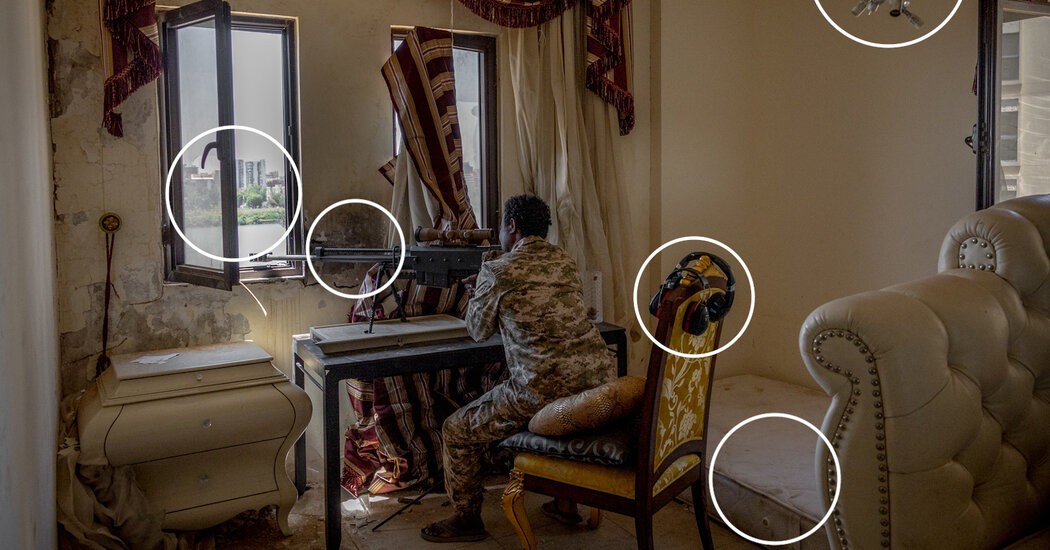In One Image The Sniper’s Nest By Ivor Prickett and Peter Robins
This is the commander of a sniper team in the Sudanese Army.
His targets, members of the paramilitary Rapid Support Forces, are on the other side of the Blue Nile. So is Sudan’s presidential palace.
The repeated use of a sniper rifle has stained and shaken the wall of this bedroom, on the top floor of what was once a luxury apartment building.
Every light bulb has been removed, whether by looters or by soldiers. No one wants a chandelier lit up behind a firing position.
At this moment, the commander, Sgt. Maj. Ismail Hassan, is only observing. The ear protectors he would wear to shoot hang neatly on the back of the chair, next to his headphones.
A bare mattress is available in the corner for rest, but Sergeant Major Hassan and his men sleep deeper into the building — farther from the gunfire.
Four years ago, this was a prime riverside location in the capital of a nation that seemed to be inching toward democracy. Then came a military coup, and then almost two years of civil war, as the army and the Rapid Support Forces, its powerful paramilitary partner, turned on one another.
By March 12, when this photograph was taken, the river was more or less the front line.
This apartment block sits on the northern bank; the presidential palace, an emblem of power for centuries, is on the southern bank.
The R.S.F. took most of Khartoum, Sudan’s capital, in April 2023. The army held on to only a few bases across the city.
In recent months, as part of a vast counteroffensive, the army and militias allied with it have gradually reclaimed much of the north and east of the city.
On Friday, the military celebrated reclaiming the palace. Next, it hopes to drive the R.S.F. out of Khartoum entirely.
But even if the army succeeds, analysts see little chance of the war ending soon, and the fighting has already reduced much of the city to a charred wasteland.
Declan Walsh contributed reporting.
Source: www.nytimes.com
